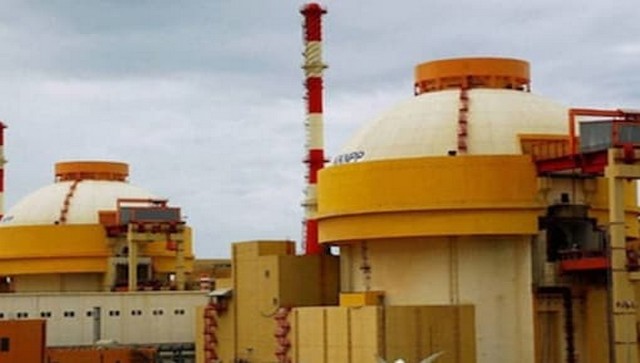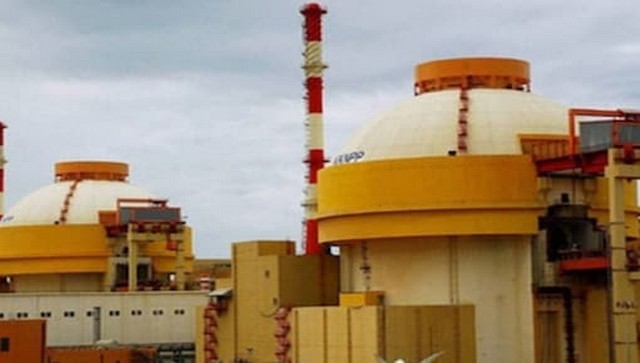The cacophony, frayed tempers and political intrigue over the 1000 MW Koodankulam Nuclear Power Plant (KNPP) reached completely chaotic levels yesterday when a group of Hindu Munnani activists assaulted the anti-KNPP protestors in Tirunelveli in southern Tamil Nadu.
A discussion between the expert panel of the Centre and a panel of the state government — the fourth so far — had to be cancelled following the attack.
The Tamil Nadu unit of the Congress — which had launched a frontal attack on Peoples Movement Against Nuclear Energy (PMANE), the organisation that is leading the protest for a while now — will intensify its campaign for the plant. On 4 February, Home Minister P Chidambaram, shipping minister GK Vasan and the minister of state in the PMO, V Narayanasamy, along with state leaders, will address a public meeting asking for the immediate commissioning of the plant.
Different units of the party, as a proxy to the Centre and the nuclear establishment, have been organising protests against the delay in commissioning the plant while PMANE continues to be firm in its stance and the siege.
The state government, the third key player, has been curiously silent after its tough posturing initially.
Meanwhile, the recent support of people like P Nedumaran, a Tamil nationalist and an open LTTE-sympathiser, and PUCL leader Dr Binayak Sen, have added to the ideological moorings of PMANE. The statement of the PMANE leader SP Udayakumar that the minorities are not safe, when the protestors were attacked by Hindu Munnani, further amplifies this ideology. It’s also worthwhile to note that Udayakumar has been staunchly opposing the Centre while being extra-careful with the state government.
Whether the villagers who rally behind its leaders, such as the US-returned Udayakumar, are on board with this political ideology and a philosophy that advocates alternatives technologies or not, the Koodankulam agitation has emerged as a rallying point for several interests. To add an element of international intrigue is the charge of foreign funding by the Congress and Narayanasamy. Accusations of support by Christian NGOs made by the Hindu Munnani add a communal colour. Interestingly, the people they wanted arrested for “inciting violence and triggering panic” regarding the nuclear plant include two local Christian priests.
For the people of Tamil Nadu, it is still something that is confined to a limited southern part of the state with occasional trips by its leaders to Chennai. Still, it throws up several angles and questions. In this cacophony, whom do we really believe? Everybody seems to be correct and wrong at the same time.
A replay of the Kurosawa classic Rashomon?
Here are the key questions, and answers that confuse us:
1. Is the plant really safe?
When nuclear scientists, supported by former President APJ Abdul Kalam, say that the plant is modern and absolutely safe, one tends to believe them. After all, the nuclear establishment has been running six nuclear power plants and 20 reactors in the country for a few decades now and so far there hasn’t been any apparent record of major mishaps, notwithstanding the campaigns by the anti-nuclear activists. In fact, it had converted back-of-the-beyond places such as Rawatbhata and a coastal dryland of Kalpakkam into thriving townships besides feeding the hugely emaciated national power grid.
Atomic power is also the mainstay in many countries such as France and Japan, but then 2011 Fukushima disaster has changed the game. A 2011 white paper by the Japanese government admits that the public trust in nuclear power has been greatly damaged by Fukushima. Yes, Fukushima seriously questions our belief on pro-nuclear scientists. PMANE says that it has not got convincing answers on safety from the Centre’s expert panel. Can the panel go public on this?
2. Why the siege only now? Shall we forget Rs 14,000 crores?
PMANE shot into prominence after the Fukushima disaster. Fuelled by the fear generated by the incident, they could galvanise people against a commission-ready KNPP. But what about the Rs 14,000 crore that has been spent on the plant? And the acute and chronic power needs of the state and the country? The two reactors together will generate 2000 MW, and later, every new unit will generate an additional 1000 MW each.
Why the protest only now? Where have they been all these 20 years when the plant was being designed and built? The KNPP, along with a fast breeder reactor in Kalpakkam, has been in the news for more than two decades. Why didn’t PMANE and the protestors raise their voice, the way they do now, and stop the construction of the plant. If they had been too weak initially, why didn’t they stop it midway? Why only now?
It looks as if the massive structures of the plant came up out of thin air and suddenly people have woken up when the turbines were ready to roll. PMANE says the local villagers had always opposed the plant, but their voices had been overlooked. But still, one doesn’t understand why they didn’t lay siege to the site as they do now. US $ 3 billion could have been used for better purposes.
Continues on the next page
3. What to do with the infrastructure?
If one agrees to the concerns of PMANE and anti-nuclear activists across the country and those with common ideological ground, and decides to scrap the project, what will one do with the infrastructure?.
Interestingly, the answers also come from PMANE and its supporters. They say that the structures can used for alternative forms of power generation.
Are things that simple? What about the enormous power crunch that is threatening the state’s development in the state? “The Centre should allot more money to the state to pursue alternative source of power”.
If only things were this easy and simple
- Does the state government want the plant?
Now let’s look at the stand of the state government, which has been more than intriguing. The Chief Minister seemed to support the protest and shot off a letter to the Prime Minister asking him to ensure that their safety concerns are addressed. Since then, the government has set up a panel to negotiate between the pro-KNPP central experts and those opposed to the plant. The protestors are swearing by the support of the state government and it hasn’t yet intervened in arresting or removing them from the plant site. In fact, it hasn’t taken a firm public stand since its initial resistance. Is the state government for the plant or against it? Was it pure political posturing or a pressure tactic to get all the power from the first unit allotted to a power-strapped state? Or was it mere political muscle-flexing?
Who knows?
But the Tamil Nadu Congress Committee (TNCC) says that the government’s “sudden volte face” is not understandable. “The government had initially expressed its support for the KNPP and demanded its early commissioning” says president BS Gnanadesikan. He also found fault with the state government for not arresting the protestors despite registering cases against them. Given a promise of 925 MW from the two plants, the state should support the project, he says. K Balu a member of the central expert group engaged in the talks said the state will get about 750 MW from the first unit.
5. What’s going to happen now?
Nobody is certain about the immediate future.
However, this is going to be an all-out Congress/Centre Vs PMANE strife. PMANE has already started painting both the Congress and the Hindu Munnai with the same brush. It will play the provincial sovereignty and anti-imperial cards more vigorously. A celebrity endorser is yet to para-troup, though.
Abdul Kalam has requested the Prime Minister to allcoate all the 1000 MW of power from the plant to the state. In such a case, will the state change its stand? It desperately needs power and this is ready-power.
If it changes its stand, where will PMANE go?


)




)
)
)
)
)
)
)
)